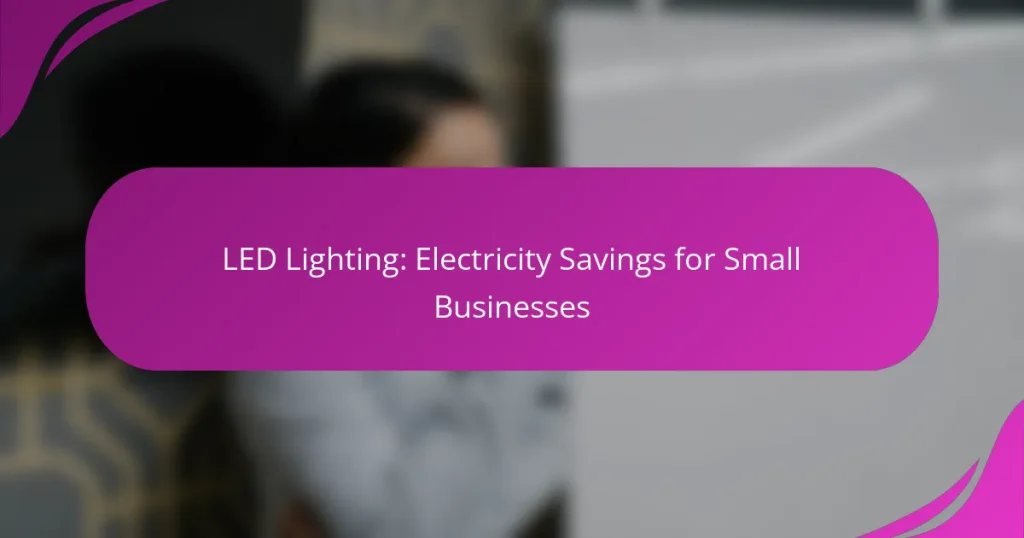LED lighting presents a valuable opportunity for small businesses to reduce electricity costs significantly by consuming less energy than traditional lighting solutions. By transitioning to LED technology, businesses can not only lower their operating expenses but also enhance the efficiency of their lighting systems tailored to specific environments, such as offices, warehouses, and retail spaces.

How can LED lighting reduce electricity costs for small businesses in the UK?
LED lighting can significantly lower electricity costs for small businesses in the UK by using less energy compared to traditional lighting options. By switching to LED technology, businesses can achieve substantial energy savings, which directly impacts their overall operating expenses.
Up to 80% energy savings
LED lights can provide energy savings of up to 80% compared to incandescent or halogen bulbs. This reduction in energy consumption translates to lower electricity bills, making it a financially sound choice for small businesses.
For example, if a small business spends around £1,000 annually on lighting, switching to LED could reduce that cost to as low as £200. This substantial saving can be redirected towards other operational needs.
Longer lifespan compared to traditional bulbs
LED bulbs typically last 15,000 to 50,000 hours, far exceeding the lifespan of traditional incandescent bulbs, which usually last around 1,000 hours. This longevity means businesses can replace bulbs less frequently, reducing the frequency of purchases.
By investing in LED lighting, a small business can avoid the hassle and costs associated with frequent bulb replacements, leading to further savings over time.
Lower maintenance costs
With their extended lifespan, LED lights contribute to lower maintenance costs. Businesses will spend less on labor and materials for replacements and repairs, which can accumulate significantly over time.
Additionally, many LED fixtures are designed to be more durable and resistant to damage, further minimizing maintenance needs. This reliability allows small businesses to focus on their core operations rather than lighting upkeep.

What types of LED lighting are best for small businesses?
Small businesses can benefit from various types of LED lighting tailored to their specific needs. Key options include LED tube lights for offices, LED high bay lights for warehouses, and LED downlights for retail spaces, each offering unique advantages in energy efficiency and functionality.
LED tube lights for offices
LED tube lights are ideal for office environments as they provide bright, even illumination while consuming significantly less energy than traditional fluorescent tubes. They typically last longer, reducing maintenance costs and downtime.
When selecting LED tube lights, consider the color temperature; options range from warm white to cool daylight, impacting the work atmosphere. Aim for a color temperature around 4000K to 5000K for a balanced, productive workspace.
LED high bay lights for warehouses
LED high bay lights are designed for high ceilings and large spaces like warehouses, offering powerful illumination that enhances visibility and safety. These lights can reduce energy consumption by up to 60% compared to conventional lighting solutions.
When choosing high bay lights, consider the mounting height and the lumen output required for your specific space. A lumen output of around 15,000 to 30,000 lumens is common for effective coverage in large areas.
LED downlights for retail spaces
LED downlights are perfect for retail spaces as they create an inviting atmosphere while highlighting products effectively. They are available in various styles and can be dimmed to adjust the ambiance based on the time of day or promotional events.
When installing downlights, focus on the beam angle and brightness to ensure products are showcased attractively. A beam angle of 30 to 60 degrees is typically effective for retail displays, enhancing customer engagement and sales.
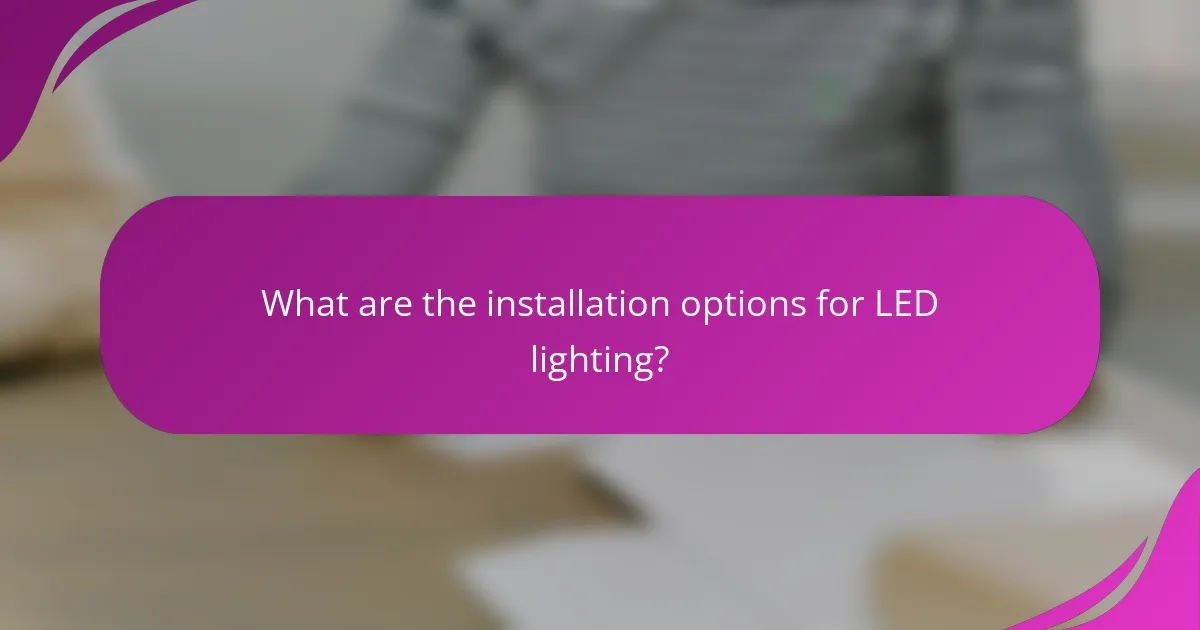
What are the installation options for LED lighting?
Small businesses have two primary installation options for LED lighting: professional installation services and DIY installation kits. Choosing the right option depends on budget, expertise, and the complexity of the lighting setup.
Professional installation services
Hiring professional installation services ensures that LED lighting is set up correctly and efficiently. Professionals can assess your space, recommend suitable fixtures, and handle any necessary electrical work, which can be particularly beneficial for larger or more complex installations.
Costs for professional installation can vary widely, typically ranging from a few hundred to several thousand dollars, depending on the project size and complexity. It’s advisable to obtain multiple quotes and check references to ensure quality service.
DIY installation kits
DIY installation kits offer a cost-effective alternative for small businesses willing to tackle the installation themselves. These kits usually come with all necessary components, including fixtures, bulbs, and installation instructions, making it easier for those with basic electrical knowledge to set up.
When opting for DIY, consider the time required for installation and the potential for mistakes. Ensure you have the right tools and follow safety guidelines. If you’re unsure about any step, consulting with a professional can prevent costly errors.

What financial incentives are available for LED lighting upgrades in the UK?
In the UK, small businesses can benefit from various financial incentives for upgrading to LED lighting, including government grants, rebates, and tax relief options. These incentives can significantly reduce the initial costs associated with transitioning to energy-efficient lighting solutions.
Government grants and rebates
The UK government offers several grants and rebate programs aimed at encouraging businesses to adopt energy-efficient technologies, including LED lighting. These programs can cover a portion of the installation costs, making it more affordable for small businesses to upgrade.
For example, the Energy Company Obligation (ECO) scheme may provide funding for energy-saving measures, including LED lighting, particularly for businesses that meet specific criteria. It’s advisable to check with local authorities or energy suppliers for available grants and their eligibility requirements.
Tax relief options
Small businesses in the UK can take advantage of tax relief options such as the Annual Investment Allowance (AIA), which allows businesses to deduct the full cost of qualifying equipment, including LED lighting, from their taxable profits. This can lead to significant tax savings in the year of purchase.
Additionally, businesses may qualify for enhanced capital allowances (ECAs) if they invest in energy-saving technologies. This allows for a 100% first-year deduction on the cost of energy-efficient equipment, further incentivizing the switch to LED lighting.
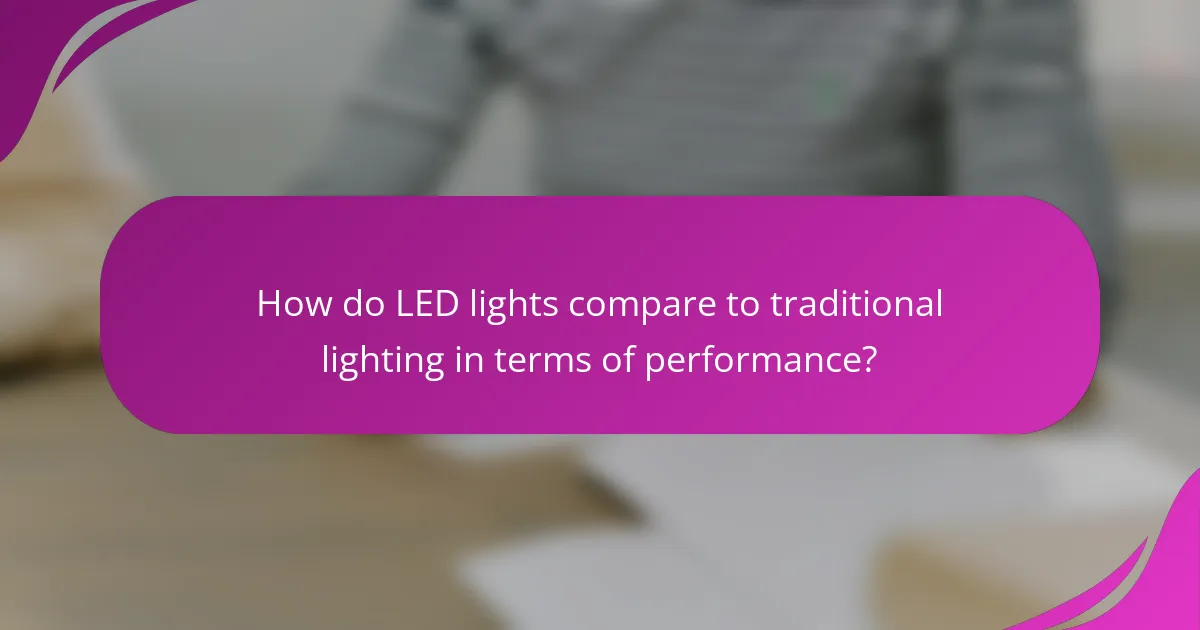
How do LED lights compare to traditional lighting in terms of performance?
LED lights significantly outperform traditional lighting in various aspects, including energy efficiency and longevity. They consume less electricity while providing better illumination, making them a cost-effective choice for small businesses.
Higher lumen output per watt
LED lights produce more lumens per watt compared to traditional incandescent or fluorescent bulbs. This means that for the same amount of electricity, LED lights can generate a brighter light, enhancing visibility in workspaces.
For example, while a standard incandescent bulb may offer around 10-17 lumens per watt, LED bulbs can provide 80-100 lumens per watt or more. This efficiency translates to lower energy bills and reduced environmental impact.
Better color rendering index (CRI)
The color rendering index (CRI) measures how accurately a light source displays colors in comparison to natural light. LED lights typically have a CRI of 80 or higher, which is superior to many traditional lighting options.
A higher CRI means that colors appear more vibrant and true to life, which is particularly important in retail environments or settings where accurate color perception is crucial. Businesses should consider LED lighting to improve the overall aesthetic and functionality of their spaces.
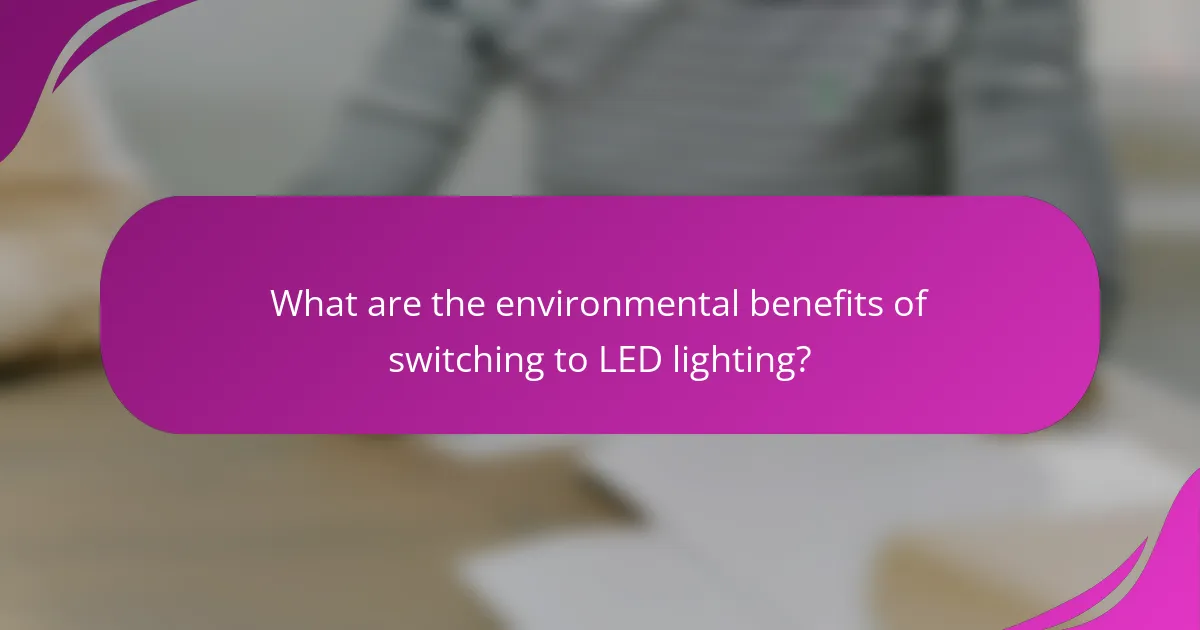
What are the environmental benefits of switching to LED lighting?
Switching to LED lighting offers significant environmental benefits, primarily through reduced energy consumption and lower waste production. By using less electricity, LEDs contribute to decreased greenhouse gas emissions and a smaller overall carbon footprint.
Reduced carbon footprint
LED lighting consumes significantly less energy compared to traditional incandescent or fluorescent bulbs, leading to a notable reduction in carbon emissions. For small businesses, this can translate to a decrease in electricity usage by up to 75%, depending on usage patterns and local energy sources.
When businesses opt for LED lighting, they not only lower their operational costs but also help mitigate climate change. By reducing energy demand, they contribute to less reliance on fossil fuels, which are major contributors to carbon emissions.
Less hazardous waste
LEDs have a longer lifespan than conventional lighting options, which means they need to be replaced less frequently. This longevity results in less waste generated over time, reducing the burden on landfills. Unlike fluorescent bulbs, which contain hazardous materials like mercury, LEDs are generally safer for the environment.
When disposing of lighting, businesses should consider recycling programs for LEDs to ensure that any materials are handled responsibly. Many localities offer recycling options that prevent hazardous waste from entering landfills, aligning with environmental regulations and sustainability goals.
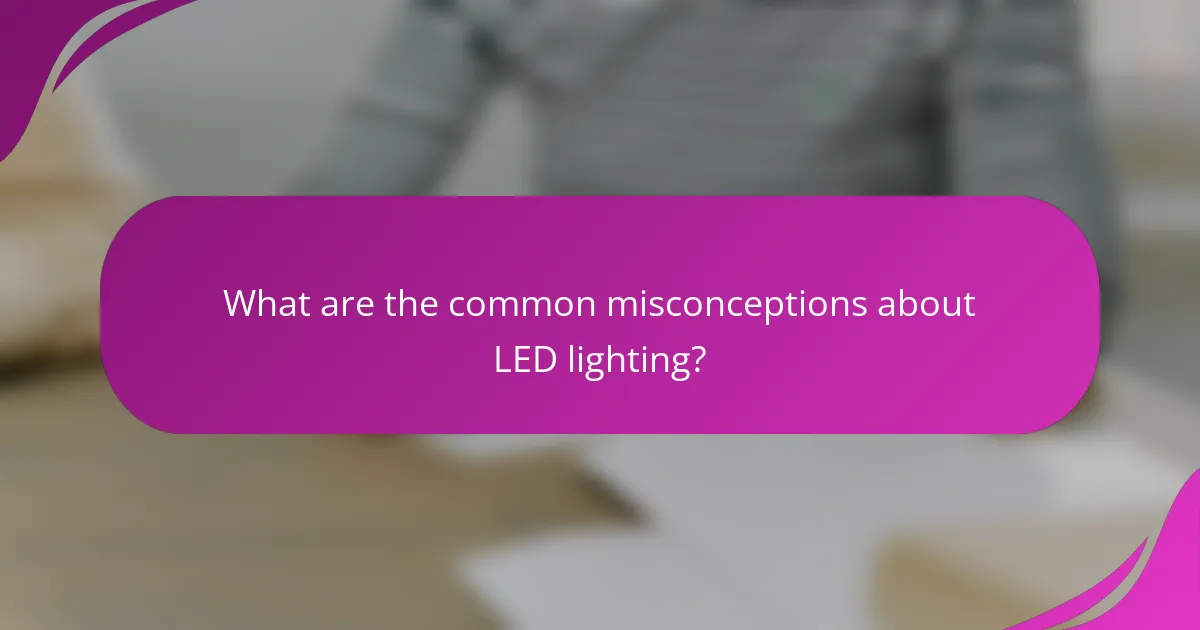
What are the common misconceptions about LED lighting?
Many small businesses hold misconceptions about LED lighting that can hinder their adoption. Understanding these myths is crucial for making informed decisions about energy-efficient lighting solutions.
LEDs are too expensive upfront
One of the most prevalent misconceptions is that LED lights are too costly to purchase initially. While the upfront cost of LED fixtures can be higher than traditional bulbs, they often lead to significant savings over time due to their energy efficiency and longevity.
For instance, LED lights can last up to 25,000 hours or more, compared to around 1,000 hours for incandescent bulbs. This means that although you may pay more upfront, the total cost of ownership—including replacement and energy costs—can be much lower.
Small businesses should consider the long-term savings when evaluating LED options. A simple calculation can show that the energy savings alone can offset the initial investment within a few years, making LEDs a financially sound choice.
